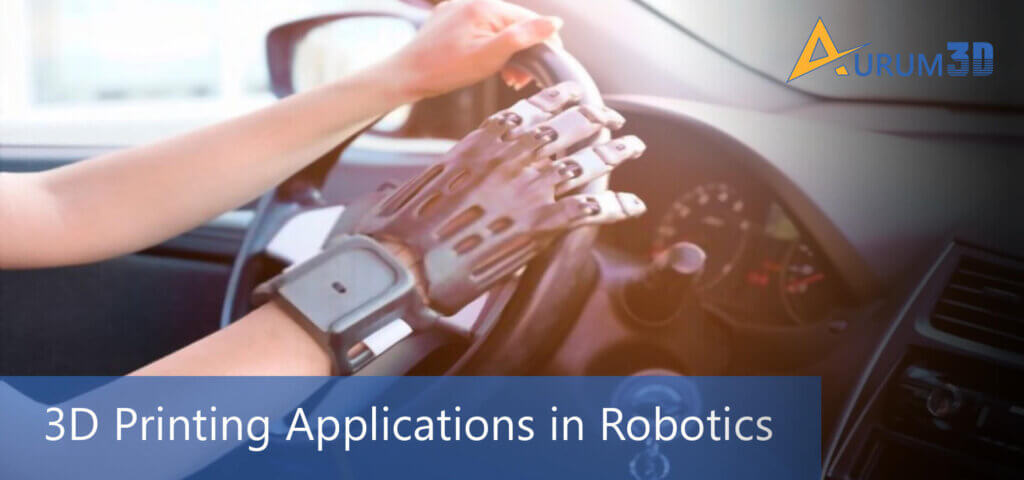As an interdisciplinary field, robotics has been producing innovative robots by integrating science, technology, and engineering. Enterprises from various industries leverage robotics to automate various processes and activities by deploying robots that replicate human actions flawlessly. But the trends in robot development and deployment change from time to time. At present, 3D printing is one of the hottest trends in robotics technology.
According to a market research study conducted by Facts and Factors,
“The global 3D Printing Robots Market was estimated at USD 1.4 billion in 2019 and is expected to reach USD 4.9 billion by 2026. The global 3D Printing Robots Market is expected to grow at a compound annual growth rate (CAGR) of 15% from 2020 to 2027.”
The consistent growth of the global 3D printing robots market depicts the effectiveness of 3D printing technologies in simplifying the development and deployment of new-generation robotics solutions. Most manufacturers leverage 3D printing technologies to develop custom robotic solutions for clients from various industries – manufacturing, construction, healthcare, automotive, aerospace, and defense.
At the same time, many large enterprises already carry out research and development (R&D) activities to build next-generation robots by experimenting with innovative ideas. That is why; new 3D printing use cases are being created for robotics. We can summarize varying 3D printing applications in robotics based on these use cases.
8 Use Cases That Depict Varied 3D Printing Applications in Robotics
Accelerating Industrial Robot Development
According to Robotics.org,
“An industrial robot is a programmable, mechanical device used in place of a person to perform dangerous or repetitive tasks with a high degree of accuracy.”
The complexity and applications of industrial robots vary across industries. The manufacturers have to build industrial robots with complex geometries according to the varying needs of industrial customers.
Many manufacturers leverage 3D printing technology to produce industrial robots with complex geometries and out-of-box features. 3D printing makes it easier for them to produce and deliver customized industrial robots without investing extra time and resources.
Experimenting with Various Materials
The manufacturers often enhance the functionality and performance of the customized industrial by experimenting with various 3D printing materials. They have the option to produce industrial robots using a variety of 3D printing technologies. They can use the appropriate 3D printing technology to create custom robots using either thermoplastic or metal.
Manage Materials More Efficiently
Like other manufacturers, the companies producing custom robotic solutions also explore ways to curtail material costs. In addition to experimenting with various materials, 3D printing technologies help manufacturers to deposit materials only where there is a need. Also, the manufacturers can leverage 3D printing to curtail production costs by reducing both material consumption and material wastage.
Facilitating Rapid Prototyping
While creating a customized robotic solution, engineers have to finetune the concept and use many design parameters. Also, they have to evaluate and assess the design elaborately based on varying requirements and design parameters. The engineers can produce 3D-printed prototypes without putting in extra time and effort.
Also, they can evaluate and test multiple versions of the prototypes without increasing material cost. The engineers can use sophisticated industrial printers to move the prototypes to production. Many enterprises already leverage 3D printing technologies to facilitate the low-volume production of industrial robots according to precise business requirements.
Producing Custom Parts
The manufactures have to streamline supply chain management to get custom parts or replacement parts for robotic solutions early. But they have to maintain an inventory of spare parts or replacement parts to get the required part on demand. Many manufacturers these days leverage 3D printing technology to reduce the dependence on suppliers.
Instead of ordering a fresh batch of replacement parts and spares from a supplier, they prefer 3D printing the replacement parts or spares. Also, they can use the right 3D printers to produce the required part or component in a few hours from a digital file. The engineers can further finetune the component by evaluating multiple versions of the 3D-printed parts.
Delivering Custom Robotic Solutions
The use cases of robots vary across industries. But many organizations these days develop custom robots according to their precise needs to facilitate process automation. The engineers have to explore ways to design and develop robotic solutions that deliver unique features and superior performance. 3D printing technologies help engineers to design and test robots that are developed to automate human activities that are considered dirty and dangerous.
The engineers can 3D-print prototypes to ensure that the robotic solution meets the operational requirements specified by the client precisely. Also, they can 3D-print and deliver the customized robotic solution in a short amount of time based on the prototype approved by the client. While creating custom robot solutions, enterprises use 3D printers to design the robot as well as fabricate the design.
Monitoring Large-Scale 3D Printing Process
Many enterprises already carry out R&D activities to integrate 3D printing and robotics seamlessly by leveraging artificial intelligence (AI). They implement AI technologies to implement robotic additive manufacturing where the robots monitor the 3D printing process. The AI algorithms will make the robot monitor the 3D printing process and detect issues or disruptions using sensors and cameras. Also, the robot can be attached to various robotic arms in the form of a robotic 3D printing tool head.
Curtailing Development Time and Cost
Many manufactures still believe that they have to incur additional costs to manufacture a robot instead of 3D-printing it. But the smarter manufacturers already leverage 3D printing technologies to reduce the time and resources required to deliver custom robotic solutions.
As mentioned earlier, 3D printing helps manufacturers to reduce production time significantly through rapid prototyping and elimination of steps. Also, the manufacture can bring down production costs by reducing material wastage. Hence, manufacturers often find it economical to 3D-print industrial robots in low volume.
3D printing is currently one of the hottest robotics technology trends. In addition to simplifying the development and deployment of custom robotic solutions, 3D printing technologies help manufacturers to produce next-generation robots. Hence, 3D printing applications in robotics will change regularly with the creation of new use cases.
About Aurum3D
Aurum3D is one of the leading 3D printing companies in Bangalore. We have been working with various new age areas like Robotics manufacturing, Drone manufacturing and Electric vehicle manufacturers in multiple areas like prototyping and custom 3D printing. You can get in touch with us for your custom requirements in electric vehicle manufacturing.

